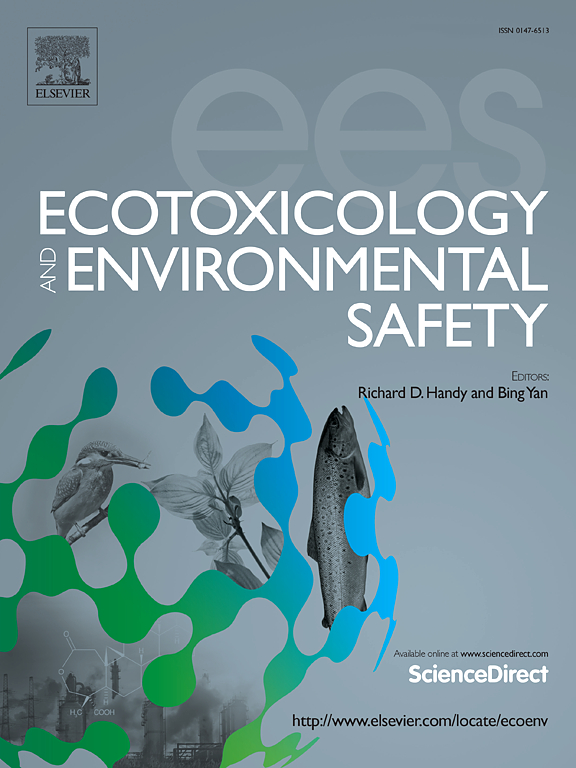A new method for internal urinary metabolite exposure and dietary exposure association assessment of 3-MCPD and glycidol and their esters based on machine learning
IF 6.2
2区 环境科学与生态学
Q1 ENVIRONMENTAL SCIENCES
引用次数: 0
Abstract
3-Monochloropropane-1,2-diol (3-MCPD) and glycidol along with their esters are commonly found in chemical production, wastewater treatment, food processing, and exhibit toxicity. Accurate exposure assessment is essential for evaluating the environmental hazards and health risks posed by these contaminants. We collected demographic data from 1587 participants and developed seven models using machine-learning algorithms to investigate urinary metabolite exposure and dietary exposure associations of 3-MCPD and glycidol and their esters. Urinary dihydroxypropyl mercapturic acid concentrations, edible oils, and total energy were identified as key predictors of dietary exposure to these contaminants (p < 0.001). The seven machine learning models demonstrated strong predictive capabilities for internal urinary metabolite exposure and dietary exposure associations (average R > 0.6). Among these, generalized additive model and extreme gradient boosting exhibited the strongest correlation and highest accuracy in predicting the associations. We utilized machine learning techniques to link dietary exposure to 3-MCPD, glycidol, and their esters with internal urinary metabolite exposure, providing an innovative and accurate method for risk exposure assessment.
基于机器学习的尿内代谢物暴露与膳食暴露相关性评估新方法
3-一氯丙烷-1,2-二醇(3-MCPD)和甘油三酯及其酯类在化工生产、废水处理、食品加工中普遍存在,具有毒性。准确的接触评估对于评估这些污染物造成的环境危害和健康风险至关重要。我们收集了1587名参与者的人口统计数据,并使用机器学习算法开发了7个模型,以调查3-MCPD和甘油醇及其酯的尿代谢物暴露和饮食暴露之间的关系。尿二羟丙基巯基酸浓度、食用油和总能量被确定为饮食暴露于这些污染物的关键预测因子(p <; 0.001)。这7个机器学习模型显示出对尿内代谢物暴露和饮食暴露关联的强大预测能力(平均R >;0.6)。其中,广义加性模型和极端梯度增强模型的相关性最强,预测精度最高。我们利用机器学习技术将饮食中3-MCPD、甘油三酯及其酯的暴露与尿内代谢物暴露联系起来,为风险暴露评估提供了一种创新而准确的方法。
本文章由计算机程序翻译,如有差异,请以英文原文为准。
求助全文
约1分钟内获得全文
求助全文
来源期刊
CiteScore
12.10
自引率
5.90%
发文量
1234
审稿时长
88 days
期刊介绍:
Ecotoxicology and Environmental Safety is a multi-disciplinary journal that focuses on understanding the exposure and effects of environmental contamination on organisms including human health. The scope of the journal covers three main themes. The topics within these themes, indicated below, include (but are not limited to) the following: Ecotoxicology、Environmental Chemistry、Environmental Safety etc.

 求助内容:
求助内容: 应助结果提醒方式:
应助结果提醒方式:


